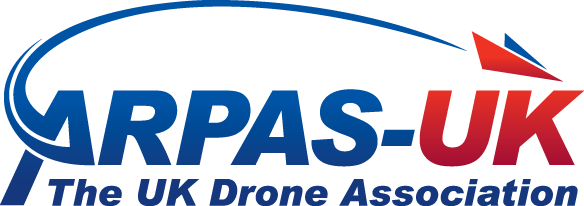Sometimes it’s easy to get absorbed in the task and lose sight of what’s around
Welcome to Drone FEEDBACK Edition 9.
Winter is upon us. Whilst the period since our last meeting in July has offered some ideal weather for Drone-based data scanning, as well as Drone transport trials, the winter months will provide some weather-related challenges. Think cloud, rain, icing, much lower temperatures that will reduce battery life, along with numb fingers that press the wrong buttons!
From a regulatory perspective, much policy development work is being undertaken on Pre-Determined Risk Assessments “PDRA”, Airspace Modernisation and Temporary Restricted Areas or “TRAs”. In addition, the CAA’s Safety Leadership Group or “SLG”, which CHIRP has been asked to join, has had its first meeting. The SLG consists of a group of Drone Stakeholders that will help contribute to the continuing development of RPAS safety policy. CHIRP’s role will be to feedback Human Factors and Just Culture related recommendations into the SLG, so that they can be considered in safety policy development.
There have been a couple of notable events in the Drone ecosystem since July, including a great deal of chat about SORA 2.5, the precise wording in Operations manuals about the risks involved in the overflight of uninvolved persons and how they can be mitigated on renewal of OAs and new iterations of PDRAs. One particularly interesting Skywise Safety Notice (SN-2023/005) was published on 9th October referring to the accuracy or otherwise of Geo Fencing on some Drone systems’ flight apps. This caught our eye because we have had reports of discrepancies between the accuracy of FRZs, prohibited areas etc marked on some Drone manufacturers Geozone Flight Apps, as distinct from where they are located according to the Aeronautical Information Publication or “AIP”. Regular readers may remember FEEDBACK 3 dated January 2022, where this was highlighted with regards to a Prohibited area P611/2.2. The area was shown as a circle on the 1:500,000 Aeronautical chart but was delineated by a multiple sided polygon on the DJI Geo Zone Map. The basic message of SN-2023/005 is that Drone pilots are ultimately responsible for where they fly their Drone, and the AIP is the ultimate source they need to consult. Being aware of this point will help Drone Operators to stay safe and not fly somewhere they shouldn’t. (Data from the AIP is available in map form on the NATS UAS airspace restrictions page, link here: https://nats-uk.ead-it.com/cms-nats/opencms/en/uas-restriction-zones/ on DroneSafetyMap.com and in the Drone Assist app.).
Human Factor related errors will however continue to creep into day-to-day Operations and make life difficult. Let’s see if we can learn something from the occurrences described below.
Rupert Dent, Drone/UAS Programme Manager
Contents
- NOTAM compilation and awareness
- DUAS24 – Minor collision with window catch
- DUAS25 – Lost sight of drone
- DUAS26 – Broken propellor flanges
- DUAS27 – Information not diseminated
- DUAS28 – Propellor icing
January 2024


